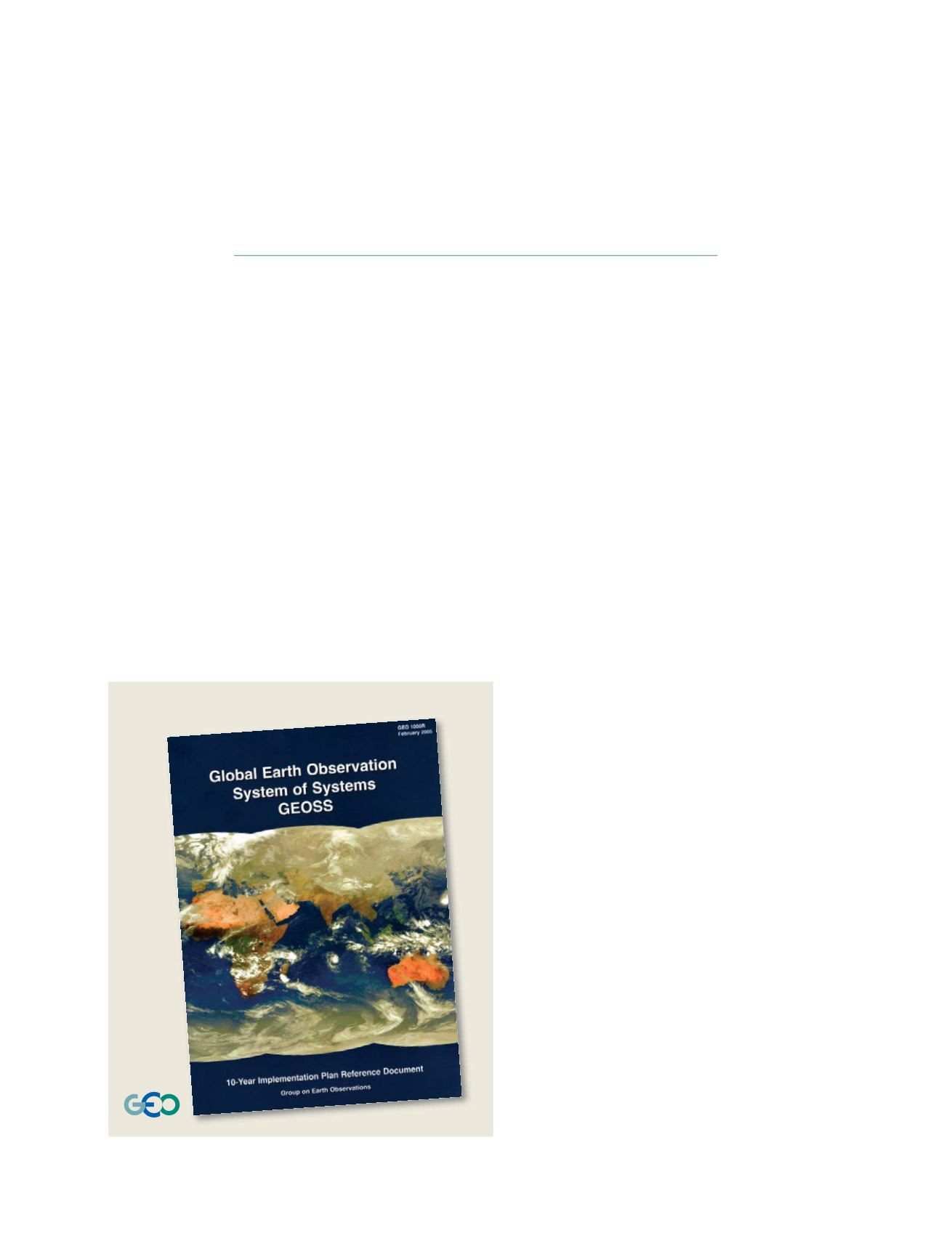

[
] 106
GEOSS architecture principles
and the GEOSS Clearinghouse
Eliot Christian, United States Geological Survey
I
n 2003, ministers at the first Earth Observations Summit
declared their intention to establish a system of comprehen-
sive, coordinated and sustained Earth observation. This
system became the Global Earth Observations System of Systems
(GEOSS). In 2005, ministers created the intergovernmental
Group on Earth Observations (GEO) to implement GEOSS. GEO
then adopted the GEOSS 10-Year Implementation Plan and
Reference Document (the ‘GEOSS Plan’).
GEO cannot pre-empt existing mandates of national systems and
international programmes that already coordinate or manage Earth
observation systems. Accordingly, the GEOSS Plan stated that GEOSS
must be a ‘system of systems’ – GEOSS must not attempt to subor-
dinate component Earth observing systems under central control.
Rather, all component systems contributed to GEOSS must continue
to operate within their own mandates.
Although its component systems operate within their
own mandates, GEOSS is to be much more than merely
the sum of its component systems. Accordingly, it must
enable its component systems to leverage each other’s
resources. The GEOSS Architecture is the primary mech-
anism for achieving such synergy among the contributed
GEOSS components.
Synergy example: wildland fire warning
In areas with wildlands emergency managers, as well
as electric power companies and park managers, need
early warning of fire outbreaks. Accurate observations,
forecasts, and maps are essential to mobilize protec-
tion efforts when there is a threat to people, wildlife,
power facilities, and other property. But many differ-
ent data systems provide observations; many different
models generate forecasts, and many different
mapping systems hold information that managers need
to display. How can these emergency managers tap
such diverse resources across a range of independent
systems? Like GEOSS, they can use a system of
systems approach.
Emergency managers periodically generate stan-
dardized maps of wildland fire potential, based on
remote sensing of soil moisture and vegetation cover.
These maps can incorporate standard maps of popu-
lated areas, terrain, power lines, and hundreds of other
important features.
Actual wildland fires are detected quickly, through
on-the-ground and remote sensing. When this occurs,
fire warnings go out over pagers, voice telephone and
fax machines to authorities, emergency managers and
power companies. Authorities issue specific alerts to
people in harm’s way and to property owners. Tactical
maps and evacuation routes are generated for response
crews as they deploy. While fire-fighters battle the
blaze, predictions of fire spread and smoke hazard,
and the effectiveness of fire management efforts, are
refined and communicated rapidly.
Events such as this fire are occurring right now in
many places worldwide. Although many data and
analysis tools are available, not all of them are inter-
operable enough to work well together. In some
places, the technology norm is still paper maps with
plastic overlays, and emergency managers still use
The GEOSS plan 10 year reference document and logo
GEOSS C
OMPONENTS
– O
BSERVING
S
YSTEMS
















